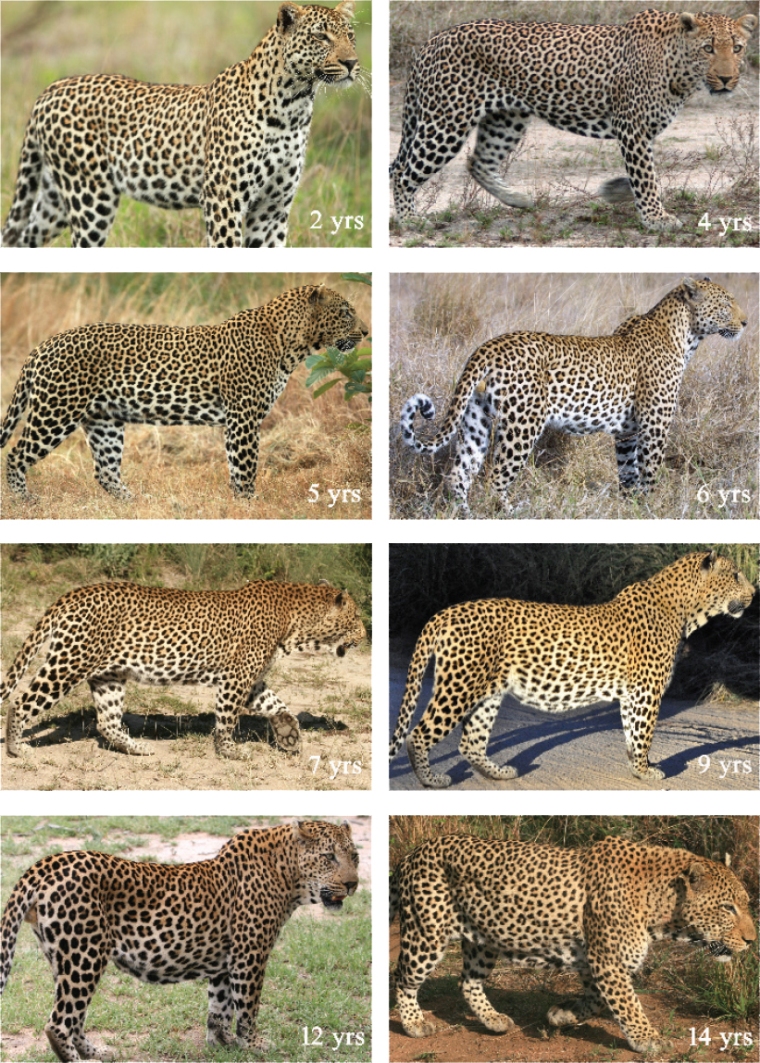Mature male leopards are not only at least 60% larger than females, but they also are broader, have larger chest girths and larger, longer heads. There is something else that you may notice about mature male leopards – their large necks are adorned with a loose fold of skin that hangs from the underside of the neck. These skin folds are called dewlaps. Dewlaps are often seen in different species throughout the animal kingdom, most notably in certain birds, lizards and hoofed mammals. In mature male leopards, a well-developed dewlap is prominent and is one of the best ways to distinguish age. However, the function of the dewlap remains unknown and largely unexplored.

Image from one of my camera trap surveys – I dubbed this guy “BigBoy” ©Panthera check out http://www.cameracatalogue.org for more!
It is speculated that these enigmatic ornaments are linked to sexual selection or male fitness as they are sexually dimorphic, meaning they are only exhibited in one sex and not in both sexes. When discussing another markedly sexual dimorphic feature amongst cats, the mane of a male lion, Charles Darwin wrote, “the mane of the lion forms a good defence against the one danger to which he is liable, namely the attacks of rival lions.” The idea behind this hypothesis is that adaptations, such as body armour or weaponry like antlers on male deer, increases the ability of males competing against other males. The winner often is the male that gets to mate with the female and passes on his genetics. Results of more contemporary research, however, indicate that injuries sustained during fights between lions do not appear to differ between maned and non-maned subadult males nor female lions, suggesting that the mane/neck area is not a high target region during fights. Instead, observation shows that the back and hindquarters seem to be the targeted areas during these confrontations. Biologists believe that the role of the mane of a male lion is an indicator of sexual fitness. Studies using life-sized toy lions sporting contrasting mane colours and lengths found that male lions are more likely to approach the lions with lighter, shorter manes and female lions are more drawn to males with darker manes. This suggests that the shorter, blonder maned males are less intimidating to rival males and thus have a perceived lower fitness.
The theory can be applied to hypothesise about the functions of a dewlap on a male leopard. However, fights between elusive male leopards are rarely observed and documented by scientists. This makes it difficult to confirm if the leopard’s dewlap has any defensive functions or if it may serve a similar purpose to that of a large, dark mane in sexual selection due to it being an indicator of fitness (and longevity).
Fighting with other males has potential to lead to injury or death. Even the smallest injuries can fester and inhibit hunting abilities leading to decline in body condition and may result in death. Another speculation about the dewlap is that it simply makes the mature males appear larger and more intimating to rival males. Typically, as a male leopard ages, his dewlap enlarges in size. Mature males hold larger territories and have more opportunity to mate with females. This also means that there are more opportunities to come into conflict with other males seeking the same territories and females. It would be ideal to avoid physical confrontation and potential injury by being able to display fighting capability and fitness to deter potential rivals without physically engaging them. Younger and smaller males may be dissuaded from engaging in a fight with a larger male sporting a more pronounced dewlap. Alternatively, oestrous females may select males with larger dewlaps suggesting that the male has higher fitness. Studies have not yet been conducted to determine if dewlap size correlates with testosterone levels or linked to reproductive success but may be indicative of longevity.
While more research into the function of a male leopard’s dewlap needs to be conducted to either confirm or deny these hypotheses, we do know that dewlaps can be used when assessing the male’s age. As a male matures, his dewlap become more developed and is most prominent in males seven years of age and older.

Imaged sourced from Panthera.
While the function of this loose skin fold on a male leopard may currently remain a scientific mystery, we can still appreciate the bravado that this physical feature gives to the impressive silhouette of a mature male leopard stalking through the dark.

Pingback: A Morning with Bokete – Byron In the Bush